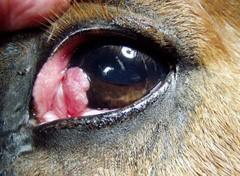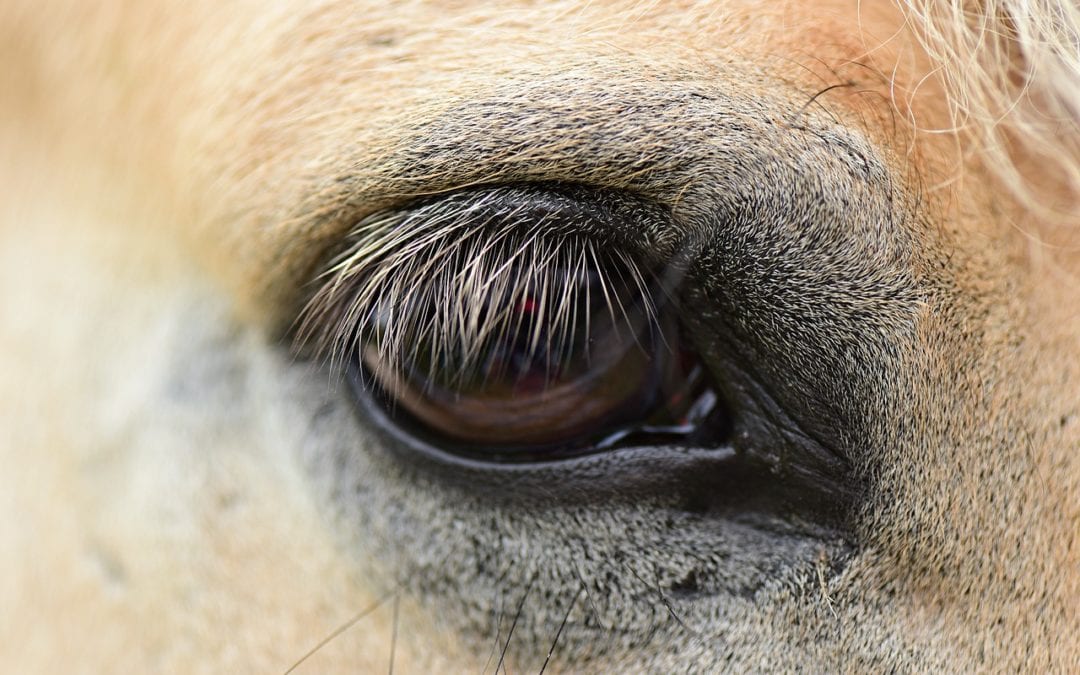by Meggie Garvey, DVM
 Living here in Colorado at high altitude predisposes horses to certain diseases due to UV light exposure. One of these diseases is a tumor called squamous cell carcinoma that can affect various parts of the body, especially the eye. Squamous cell carcinomas can start out as a small ulcerated area on the eyelid, cornea, third eyelid, or conjunctival tissues, and progress to a fleshy proliferative mass. Certain horses are more likely to develop a squamous cell carcinoma. Living at high altitude with lots of UV light exposure, older horses, and horses with pink skin around their eyes (paints, appaloosas) are predisposed.
Living here in Colorado at high altitude predisposes horses to certain diseases due to UV light exposure. One of these diseases is a tumor called squamous cell carcinoma that can affect various parts of the body, especially the eye. Squamous cell carcinomas can start out as a small ulcerated area on the eyelid, cornea, third eyelid, or conjunctival tissues, and progress to a fleshy proliferative mass. Certain horses are more likely to develop a squamous cell carcinoma. Living at high altitude with lots of UV light exposure, older horses, and horses with pink skin around their eyes (paints, appaloosas) are predisposed.
To find out definitively what a mass is, sending a sample of the tissue to a pathologist is best (called “histopathology”). Your horse will have the best prognosis if an ocular mass is treated as soon as it is noticed while it is still small.
There are many treatments for ocular squamous cell carcinoma, including surgical removal, freezing (cryotherapy), ablation with a CO2 laser, immunotherapy, local radiation, and local chemotherapy. In some cases of extremely invasive tumors, removal of the entire eye and surrounding tissues is necessary to save a horse’s life. Generally, surgical removal of as much of the mass as possible in combination with another therapy such as freezing or radiation gives the best outcome. The best treatment varies based on the location of the tumor (eyelid vs. third eyelid vs. cornea). Squamous cell tumors on the cornea should be referred to an ophthalmologist to perform corneal surgery using a microscope. If you ever notice an abnormality with your horses eyes, please call us at Alpine Animal Hospital to evaluate it sooner rather than later!

